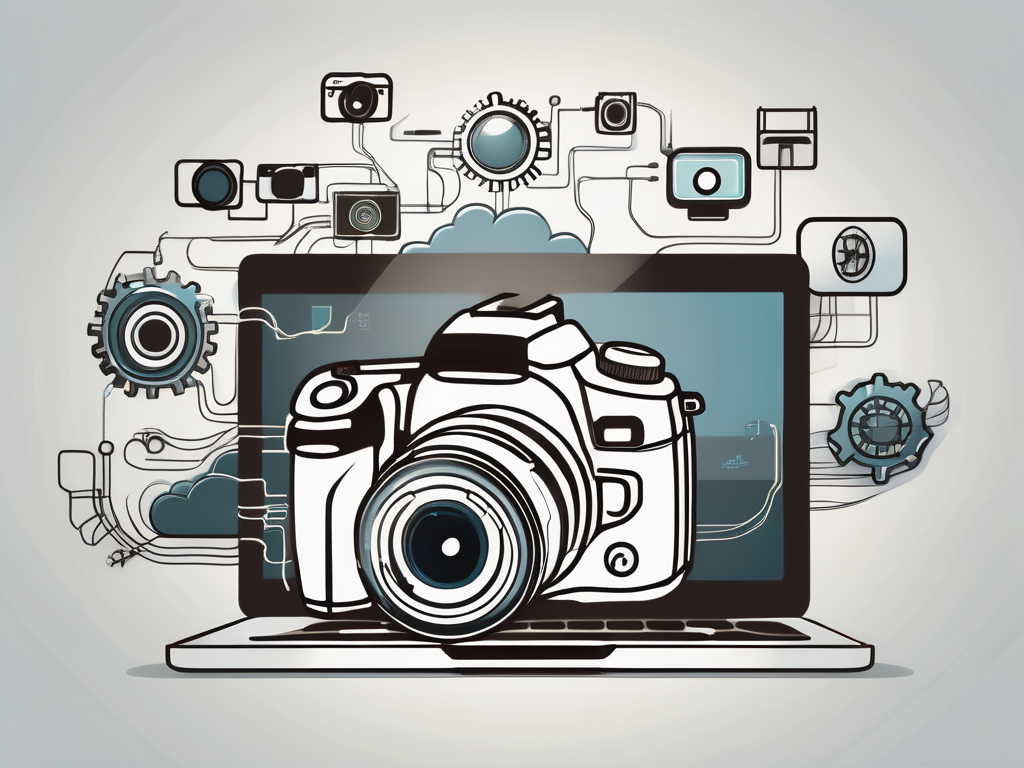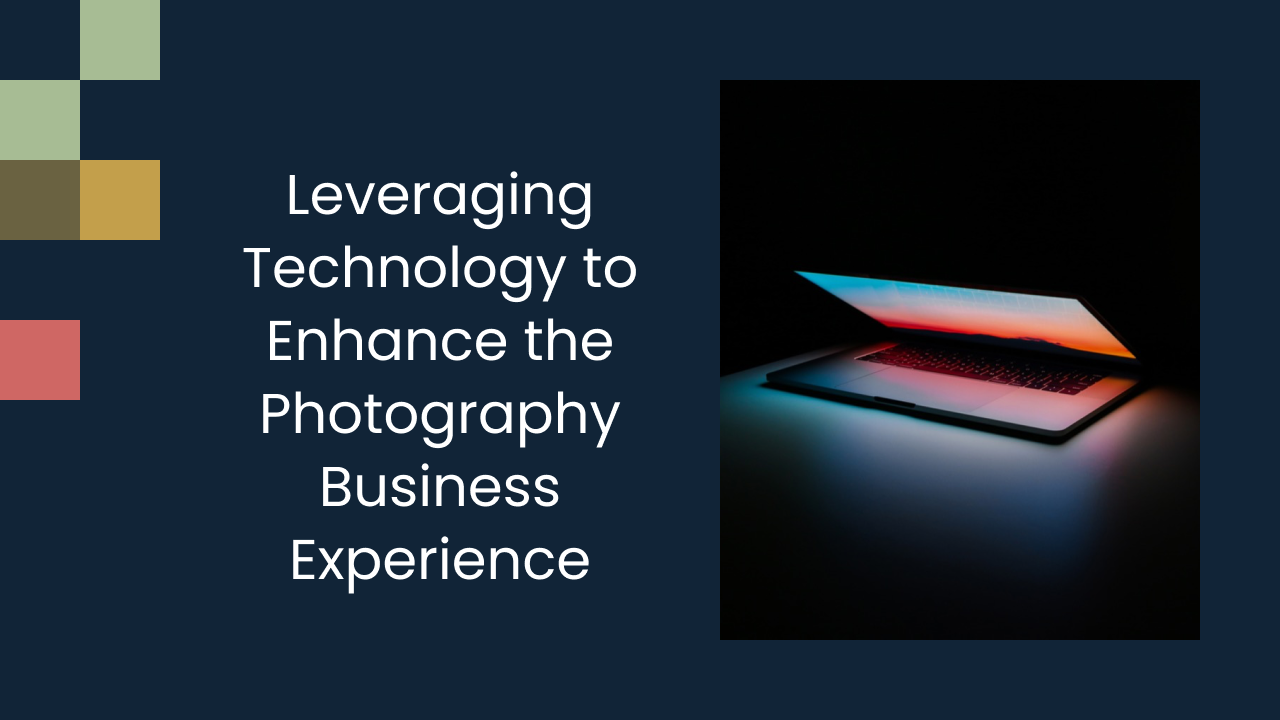Leveraging Technology to Enhance the Photography Business Experience

Technology has revolutionized the photography industry, transforming the way photographers capture and deliver their work. The intersection of technology and photography offers numerous opportunities for professionals to enhance their business and elevate the overall experience for their clients. Understanding the role of technology in modern photography and harnessing its power for business growth is crucial in today's digital era.
Understanding the Intersection of Technology and Photography
Technology has become an essential part of the photography workflow, changing how photographers approach their craft and connect with their clients. In today's fast-paced digital world, embracing technology is no longer an option but a necessity to stay ahead in the competitive market.
The role of technology in modern photography is multi-faceted. It enables photographers to capture breathtaking images, enhance post-processing workflows, and deliver final products efficiently. Additionally, technology has facilitated advancements in equipment, software, and online platforms, making it easier for photographers to showcase and sell their work.
The Role of Technology in Modern Photography
Technology has completely transformed the way photographers approach their work. With the advent of digital cameras, photographers can now instantly preview their images, adjust settings on the go, and ensure optimal results. The use of high-quality sensors, advanced autofocus systems, and image stabilization technology has made it easier for photographers to capture sharp and well-exposed images.
Furthermore, technology plays a key role in post-processing workflows. Image editing software provides photographers with a wide range of tools and options to fine-tune their images, correct flaws, and create stunning visual effects. With the use of computers and sophisticated software, photographers can achieve more precise control over the final outcome of their photographs.
Moreover, technology has opened up new avenues for photographers to explore and experiment with their creativity. From the use of drones to capture aerial shots to the incorporation of virtual reality in immersive photography experiences, technology has expanded the possibilities for photographers to push the boundaries of their art.
Key Technological Advancements in Photography
Over the years, several technological advancements have revolutionized the photography industry. One such advancement is the integration of artificial intelligence (AI) into cameras and editing software. AI algorithms can automatically optimize settings, detect and correct common image flaws, and even suggest creative enhancements. This not only saves photographers time but also enhances the overall quality of their work.
Another significant technological advancement is the rise of cloud-based storage and collaboration platforms. These platforms allow photographers to securely store their images, access them from anywhere, and share them with clients or colleagues. This has greatly simplified the process of delivering images and collaborating with clients and other professionals in the field.
Furthermore, advancements in online platforms and social media have provided photographers with new avenues to showcase and sell their work. From online galleries to social media platforms dedicated to photography, technology has made it easier for photographers to reach a wider audience and establish their presence in the industry.
In conclusion, the intersection of technology and photography has transformed the way photographers approach their craft. From capturing images to post-processing and showcasing their work, technology has become an indispensable tool for photographers in today's digital age. Embracing and staying up-to-date with the latest technological advancements is crucial for photographers to stay competitive and continue pushing the boundaries of their art.
Harnessing Technology for Business Growth
Technology is not only instrumental in improving the photography process but also in streamlining business operations and driving growth. By leveraging technology effectively, photographers can save time, reduce costs, and create a more professional image for their business.
However, the benefits of technology for photographers extend far beyond just streamlining operations and enhancing efficiency. Let's explore some additional ways in which technology can revolutionize the photography industry.
Streamlining Operations with Technology
Efficient operations are vital for the success of any photography business. Technology can help automate repetitive tasks, such as organizing and backing up images, scheduling appointments, and managing client information. By implementing customer relationship management (CRM) software, photographers can track client interactions, manage bookings, and streamline communication.
But did you know that technology can also assist photographers in enhancing their creative process? Advanced photo editing software, such as Adobe Photoshop and Lightroom, offer a wide range of tools and features that allow photographers to bring their artistic vision to life. From adjusting colors and tones to removing unwanted elements, these software programs empower photographers to create stunning images that captivate their audience.
Additionally, online invoicing and payment platforms make it easier for photographers to manage their finances, send invoices, and accept payments securely. This not only saves time but also ensures a seamless payment experience for clients, increasing customer satisfaction.
Technology as a Marketing Tool for Photographers
Marketing plays a crucial role in attracting new clients and retaining existing ones. Technology offers various avenues for photographers to effectively market their services and showcase their work.
Social media platforms provide a powerful marketing tool for photographers to promote their work to a wider audience. By sharing captivating images and engaging with followers, photographers can build a strong online presence and attract potential clients. Additionally, websites and online portfolios allow photographers to display their best work, provide information about their services, and create a professional image for their business.
But the impact of technology on marketing goes beyond just social media and websites. With the rise of virtual reality (VR) and augmented reality (AR), photographers can now offer immersive experiences to their clients. Imagine being able to virtually walk through a wedding venue or explore a destination before making a booking. These technologies not only enhance the client's experience but also give photographers a competitive edge in the market.
In conclusion, technology has become an indispensable tool for photographers looking to grow their business. From streamlining operations to enhancing creativity and marketing efforts, the possibilities are endless. By embracing technology and staying up-to-date with the latest advancements, photographers can stay ahead of the curve and thrive in an ever-evolving industry.
The Impact of Technology on Client Experience
Delivering an exceptional client experience is paramount in the photography business. Technology can play a crucial role in enhancing client engagement and delivering high-quality results.
In today's digital age, the relationship between technology and client experience in photography has become more intertwined than ever before. The seamless integration of technological advancements has revolutionized the way photographers interact with their clients, from the initial consultation to the final delivery of images.
Enhancing Client Engagement through Technology
With technology, photographers can enhance client engagement throughout the entire photography process. From initial communication to image delivery, technology enables seamless interaction and feedback.
Online galleries and client proofing platforms allow photographers to share images with clients, who can then provide feedback and select their preferred images. This streamlined process eliminates the need for physical meetups and ensures efficient collaboration.
Furthermore, the use of virtual reality (VR) technology in photography has opened up new possibilities for client engagement. Clients can now immerse themselves in a virtual gallery showcasing the photographer's work, providing a unique and interactive way to experience the artistry behind each image.
Delivering High-Quality Results with Advanced Tech Tools
Advanced technology tools have empowered photographers to deliver high-quality results that exceed client expectations. From AI-powered image editing software to high-resolution printing techniques, photographers can create stunning visuals that showcase their artistic vision.
Moreover, technology has brought about advancements in printing and display technology, allowing photographers to offer their clients premium prints and immersive viewing experiences. From large format prints to digital displays, technology has elevated the way clients interact with and appreciate photographic artwork.
As technology continues to evolve, photographers are constantly exploring new ways to leverage its capabilities to enhance the client experience. By staying at the forefront of technological innovations, photographers can not only meet but exceed the expectations of their clients, creating lasting impressions and building strong relationships based on trust and innovation.
Future Trends: Technology and Photography
The world of technology is ever-evolving, and it continues to influence the photography industry. Staying updated with the latest trends and embracing future innovations is essential to thrive in this dynamic environment.
Predicted Technological Innovations in Photography
Experts predict that the future of photography will see even more integration of AI and machine learning. From intelligent image recognition to automated culling and post-processing, technology will continue to play a significant role in streamlining workflows and optimizing image quality.
Imagine a world where AI can analyze a photograph and automatically enhance its colors, contrast, and sharpness, all while preserving the photographer's artistic intent. This level of automation would not only save photographers valuable time but also ensure consistent and stunning results.
But it doesn't stop there. Virtual and augmented reality technologies could revolutionize the way photographs are experienced. Imagine stepping into a virtual gallery where you can walk around and interact with photographs as if they were physical objects. This immersive experience would bring a whole new level of engagement and emotion to the art of photography.
Preparing Your Photography Business for the Future
To prepare your photography business for the future, it is essential to embrace technology and continuously adapt to new tools and techniques. Investing in the latest equipment, staying updated with software advancements, and exploring new ways to market your services will help you stay at the forefront of the industry.
Imagine having a camera that not only captures stunning images but also has built-in AI capabilities that can analyze the scene and suggest creative compositions. This would not only make your job as a photographer easier but also open up new possibilities for artistic expression.
Networking with other professionals, attending industry conferences, and engaging in online communities will also provide valuable insights and opportunities for growth. Imagine being part of a global network of photographers who share ideas, collaborate on projects, and support each other's creative journeys. The power of community and collaboration can propel your photography business to new heights.
By embracing technology and staying agile, you can leverage its power to enhance the photography business experience and achieve long-term success. The future of photography is exciting and full of possibilities. Are you ready to embrace it?




